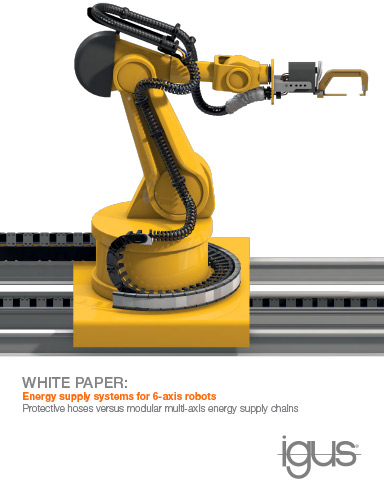Protective hoses versus modular multi-axis energy supply chains
The demand for industrial robots continues to increase rapidly. Having registered a record year with 517,000 units in 2021, the latest statistics from the International Federation of Robotics (IFR) for 2022 point to a further growth in sales by 10 percent. These high growth rates will continue in the near future.
Even if the cyclical developments in the two main customer sectors, the automotive and electronics sectors, lead to fluctuations in demand, both industries display a strong trend towards making more investments in robotic systems and production automation. In addition, the orders for robotics rise constantly in other segments of the plastics, pharmaceutical and food industries up to the metal and machine sector. Demand from Asia, especially China, will probably provide an even bigger boost to the market by the end of the decade.
With the increasing demand, the requirements on manufacturers and suppliers in robotics are also rising. The competition has intensified significantly. New companies are entering the market and increase the cost and price pressures among the established ones. The booming robot market in China with its growing national competition is a striking example of this trend.
At the same time the widening spectrum of applications demands ever more specialized and complex solutions. This applies to the entire system as well as for the individual components. The twin challenges of technological progress and cost efficiency are expressed very clearly in the specific case of the energy supply, the umbilical cord of the robot.
Especially in 6-axis robots, which are designed to provide maximum freedom of handling in modern automation, the secure and flexible energy supply becomes a core problem in terms of design and materials. Therefore, a choice has to be made between two alternative solutions — protective hoses and energy chains. Both options provide basic advantages and disadvantages in terms of the aspects of reliability, cost and performance.
Fill out the information below to download the resource.

Article topics
Email Sign Up











